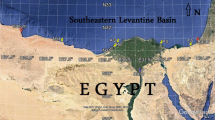Abstract
Using data from automatic surface weather stations, buoys, lidar and Doppler, the diurnal variation and the three-dimensional structure of the sea breezes near the sailing sites of the Good Luck Beijing—2006 Qingdao International Regatta from 18 to 31 August 2006 are analyzed. Results show that excluding rainy days and days affected by typhoon, the sea breezes occur nearly every day during this period. When Qingdao is located at the edge of the subtropical high at 500 hPa, the sea breeze is usually stronger, around 3–4 m s−1. It starts at around 1100 to 1300 LST and lasts about 6 hours. The direction of the sea breeze tends to be southeasterly. When Qingdao is under the control of the subtropical high, the sea breeze is usually weaker, less than 2.5 m s−1 throughout the day, and begins later, between 1300 and 1500 LST. In this case, the direction of the sea breeze is variable from easterly to southeasterly.
Most sea breezes in Qingdao are very shallow, up to 300 meters deep. Strong sea breezes can reach 1.5 km in depth and can push as far as 100 km inland. If the Huanghai sea breeze moves inland and meets the sea breeze of the Jiaozhou Bay in the western part of Qingdao, the sea breeze will strengthen and form three boundaries due to the interaction of the two sea breezes.
Similar content being viewed by others
References
Arritt, R.W., 1993: Effects of the large-scale flow on characteristic features of the sea breeze. J. Appl. Meteor., 32, 116–125.
Barbato, J. P., 1975: The sea breeze of the Boston area and its effect on the urban atmosphere. Ph. D. Dissertation, Boston University, 223pp.
Bechtold, P., J.-P. Pinty, and P. Mascart, 1991: A numerical investigation of the influence of large-scale winds on sea-breeze-and inland-breeze-type circulations. J. Appl. Meteor., 30, 1268–1279.
Buckley, R. L., and R. J. Kurzeja, 1997: An observational and numerical study of the Nocturnal sea breeze. Part I: Structure and Circulation. J. Appl. Meteor., 36, 1577–1598.
Chang, Z. Q., Z. M. Wu, and S. H. Gao, 2002: Simulation of the three-dimensional structure of sea and land breeze in Qingdao. Periodical of Ocean University of China, 6, 877–883. (in Chinese)
Clarke, R. H., 1984: Colliding sea-breezes and the creation of internal atmospheric bore wafes: Twodimensional numerical studies. Australian Meteorological Magazine, 32, 207–226.
Defant, A., 1951: Local winds. Compendium of Meteorology. T. F. Malone, Ed., Amer. Mereor. Soc., 658–672.
Estoque, M. A., 1961: A theoretical investigation of the sea breeze. Quart. J. Roy. Meteor. Soc., 17, 645–660.
Estoque, M. A., 1962: The sea breeze as a function of the prevailing synoptic situation. J. Atmos. Sci., 19, 244–250.
Frizzola, J. A., and E. L. Fisher, 1963: A series of sea breeze observations in the New York City area. J. Appl. Meteor., 2, 722–739.
Haurwitz, B., 1947: Comments on “The sea-breeze circulation.” J. Meteor., 4, 1–8.
Houghton, D., and F. Campbell, 2005: Wind Strategy. Fernhurst Books, England, 128pp.
Jin, H., and Y. C. Wang, 1991: Simulation of the three sea breeze. Chinese J. Atmos. Sci., 15, 25–32. (in Chinese)
Neumann, J., 1977: On the rotational rate of the direction of sea and land breezes. J. Atmos. Sci., 34, 1913–1917.
Reible, D. D., J. E. Simpson, and P. F. Linden, 1993: The sea breeze and gravity-current frontogenesis. Quart. J. Roy. Meteor. Soc., 119, 1–16.
Schroeder, M. J., M. A. Fosberg, O. P. Cramer, and C. A. O’Dell, 1967: Marine air invasion of the Pacific coast: A problem analysis. Bull. Amer. Meteor. Soc., 48, 802–808.
Sha, W., T. Kawamura, and H. Ueda, 1991: A numerical study on sea/land breezes as a gravity current: Kelvin-Helmholtz billows and inland penetration of the sea-breeze front. J. Atmos. Sci., 48, 1649–1665.
Staley, D. O., 1957: The low-level sea breeze of northwest Washington. J. Meteor., 14, 458–470.
Wakimoto, R. M., and N. T. Atkins, 1993: Observations of the sea-breeze front during CaPE. Part I: Single-Doppler, satellite, and cloud photogrammetry analysis. Mon. Wea. Rev., 122, 1092–1114.
Wexler, R., 1946: Theory and observations of land and sea breezes. Bull. Amer. Meteor. Soc., 27, 272–287.
Wu, Z. M., and B. S. Long, 1993: Analysis of the local wind in Qingdao. Ocean and Lake Bulletin, 16–21. (in Chinese)
Xue, D. Q., Q. L. Zheng, and X. Z. Qian, 1995: Sea breeze and its effect in Longkou. Ocean and Lake Bulletin, 1–9. (in Chinese)
Yu, X. D., X. P. Yao, T. N. Xiong, X. G. Zhou, H. Wu, B. S. Deng, and Y. Song, 2006: The Principle of Doppler Weather Radar. China Meteorological Press. 40–51. (in Chinese)
Zhang, Y., Y. Chen, and T. A. Schroeder, 2005: Numerical simulation of sea-breeze circulation over Northwest Hawaii. Wea. Forecasting, 20, 827–846.
Zhong, S., and E. S. Takle, 1993: The effects of largescale winds on the sea-land-breeze circulations in an area of complex coastal heating. J. Appl. Meteor., 32, 1181–1195.
Zhuang, Z. S., M. Q. Zheng, J. X. Wang, X. J. Zhou, and M. K. Zhang, 2005: Climate feature of sea breeze in Rizhao and it’s effect on local weather. Meteorological Monthly, 31, 66–70. (in Chinese)
Author information
Authors and Affiliations
Corresponding author
Rights and permissions
About this article
Cite this article
Sheng, C., Xue, M. & Gao, S. The structure and evolution of sea breezes during the qingdao olympics sailing test event in 2006. Adv. Atmos. Sci. 26, 132–142 (2009). https://doi.org/10.1007/s00376-009-0132-y
Received:
Revised:
Published:
Issue Date:
DOI: https://doi.org/10.1007/s00376-009-0132-y




